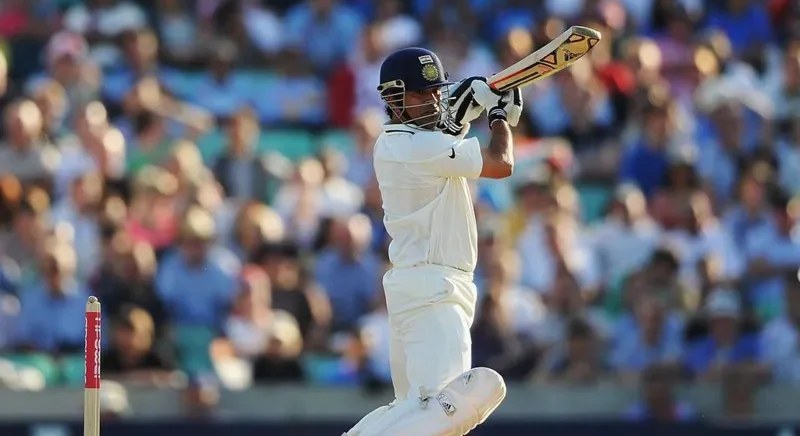Indian cricket has undergone a seismic transformation over the past two decades. What began under the leadership of Sourav Ganguly has flourished through Mahendra Singh Dhoni’s reign and further evolved under Virat Kohli’s aggressive and uncompromising captaincy. This shift wasn’t merely tactical or strategic—it signified a profound change in how India approached cricket on both domestic and international stages. At the heart of this evolution was a new openness to talent, no matter where it came from.
Breaking Traditional Boundaries
Historically, Indian cricket’s talent pool was largely concentrated in the country’s traditional cricketing strongholds like Mumbai, Delhi, and Bangalore. However, as India broadened its scope, players from smaller towns and lesser-known regions began emerging onto the national stage. The mindset shifted from focusing on geography to merit: if you had the talent, you would get your chance. This significant change started under Ganguly, was carried forward by Dhoni, and solidified under Kohli. Despite the challenges of dealing with a cricket board frequently embroiled in politics, the team’s ability to discover and nurture talent became a hallmark of Indian cricket.
The retirement of Sachin Tendulkar in 2013 marked the end of an era in Indian cricket. Arguably the most iconic figure in the sport, Tendulkar’s departure left a void that many feared would destabilize the team. However, the exact opposite occurred. Since his retirement, India has played 106 Test matches, winning 58 and losing only 29, with just 19 matches ending in a draw. The rarity of drawn matches speaks volumes about India’s shift in mindset—they were no longer content with settling for safe outcomes but instead pushed for wins.
India’s Rise in Australia: A New Psychological Edge
India’s back-to-back Test series victories in Australia exemplify the shift in their approach. Traditionally, Australia was seen as an unconquerable fortress for Indian cricket, with teams often crumbling under pressure. But the modern Indian team matched Australia not just in skill but also in mental toughness, aggression, and self-belief. It was more than just a cricketing battle; it was a psychological one. India, once viewed as a team that played with caution, now played to win—regardless of the opposition or the venue.
The Kohli Era: Passionate, Aggressive, and Relentless
Virat Kohli, who took over as India’s captain following Dhoni’s retirement, played an instrumental role in this transformation. His passion for Test cricket and his drive to win at all costs became the driving force behind the team’s resurgence. Kohli’s first Test as captain in Adelaide in 2014 was a defining moment for Indian cricket. Chasing an improbable target of 364 runs, India came close to pulling off an extraordinary victory, falling short by just 48 runs. Despite the loss, this match marked a turning point—it symbolized India’s new, fearless approach to the game.
Kohli’s leadership style was unlike anything Indian cricket had seen before. He was aggressive, uncompromising, and, at times, controversial. Yet, it was precisely this attitude that reinvigorated the team. Out of the 68 Tests Kohli captained, only 16% ended in draws, the lowest percentage among top cricket captains in history. Even legends like Clive Lloyd saw a higher percentage of drawn matches during their reign. Kohli wasn’t interested in playing safe; he wanted results, and this aggressive approach became the team’s defining characteristic.
A New Breed of Players and the Rise of Fast Bowling
Kohli’s leadership was complemented by a core group of players who shared his hunger for success. The likes of Cheteshwar Pujara, Ajinkya Rahane, Ravichandran Ashwin, Ishant Sharma, Ravindra Jadeja, and KL Rahul became essential pillars of the team’s success. What’s more, India’s ability to discover talent from non-traditional centers continued, with players emerging from various parts of the country.
One of the most notable changes in Indian cricket has been the rise of fast bowling. Historically, India was known for its spinners, but fast bowlers were a rare commodity. After a string of overseas failures in 2011-12, the cricket board recognized the need to develop fast-bowling talent to compete on the international stage. Domestic pitches were altered to be more fast-bowler-friendly, and the results were evident over time. India unearthed a group of world-class fast bowlers, led by Jasprit Bumrah, who would become instrumental in India’s success abroad.
Also Read: Trucking Injuries Attorney Houston: Seeking Justice After an Accident
Bumrah, with his unconventional bowling action, is perhaps the clearest example of India’s shift away from traditional cricketing orthodoxy. In earlier generations, someone with Bumrah’s unorthodox style might not have made it to the top, but effectiveness has now taken precedence over form. Today, Bumrah is considered one of India’s greatest fast bowlers, and his success is emblematic of a broader cultural shift in Indian cricket.
Learning from History: Overcoming Past Failures
For decades, India’s Achilles’ heel was its inability to handle fast bowling, especially in overseas conditions. The low points of Indian cricket can often be traced back to their struggles against quality fast bowlers. In 1952, Fred Trueman and Alec Bedser skittled India out twice in a single day at Manchester. In 1974, India collapsed for just 42 runs at Lord’s against Geoff Arnold and Chris Old, an infamous event that became the subject of a cruel sports cartoon.
Yet, when India was bowled out for 36 in Adelaide in 2020, the response was different. The collapse wasn’t ridiculed as it had been in the past; instead, it was accepted as a freak occurrence. The team didn’t panic, nor did it dwell on the past. Instead, they bounced back to win two of the next three Tests, clinching the series in remarkable fashion. This ability to brush off failures and focus on the positives is a testament to the team’s newfound resilience.
The Future of Indian Cricket: New Stars and Fresh Challenges
As Kohli, Rohit Sharma, Ravichandran Ashwin, and Ravindra Jadeja near the end of their illustrious careers, Indian cricket is poised for yet another transition. However, the future looks incredibly bright, with young talents like Rishabh Pant, Shubman Gill, Yashasvi Jaiswal, and a host of emerging fast bowlers ready to step into the spotlight. These players have already shown that they are more than capable of carrying the torch forward.
Also Read: Premier Houston Semi Truck Accident Attorney
India is set to face Australia in a five-Test series starting in November, and for the first time in decades, the pressure is squarely on Australia. India, having built on the foundation laid by the Tendulkar generation and strengthened by Kohli’s leadership, is now a cricketing powerhouse.
Conclusion: A New Era of Dominance
Indian cricket’s journey from a team reliant on individual brilliance to one built on collective resilience and depth has been remarkable. The transformation has been driven by a combination of astute leadership, bold decision-making, and a willingness to adapt. From discovering players from non-traditional centers to building a world-class fast-bowling attack, Indian cricket has evolved into a force to be reckoned with. As the next generation of stars prepares to take the reins, one thing is clear: Indian cricket’s best days are still ahead.








